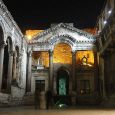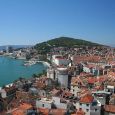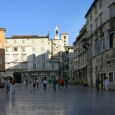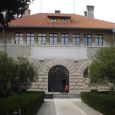Split
Advertisement
By Air
Split's airport is located 25km from the city port. You can take a bus from the airport to Split, which is available after every arrival and drives you to the sea port, and taxi services are available. You may also sign up for a rent-a-car at the airport. The Split airport is well connected to nearly all European countries during the summer, directly or via Zagreb.
By Rail
The railway station is located near the ferry port, next to the bus station, in the center of the city, and the main railway route is Zagreb-Split. Because Zagreb is connected by rail to all of Europe, you can plan your arrival by train.
By Bus
Bus station Split is located in the very centre of the city, right next to city harbour and railway station. This is the location that enables quick and simple communication and passenger transfer. The bus station with its thirty eight employees tries to give the passengers the best possible quality of service and comfortable stay at its facilities. The investments in new technology, modernization and further development of services offered are great, all in purpose of our customers' satisfaction with the swiftness and quality of our service.
Advertisement
Palace of Diocletian
Commissioned by Emperor Diolcetian and built in Split by the architects Filotas and Zotikos, the Palace of Diocletian is a well preserved Roman structure built in typical Roman military camp style. Emperor Diocletian lived in the Palace of Diocletian for only eight years until his death in 313. Following his death the Palace of Diocletian was used as an administrative center and the governor's residence. Three centuries, later in 615, the Palace of Diocletian was used as a refuge for the residents of Salona when their city was sacked by the Avars.
Originally the Palace of Diocletian was 215m / 705ft long, 180m / 590ft wide, and enclosed with thick walls up to 28m / 92ft high. On each corner was a tower and the Palace of Diocletian had four entrances, three of them of note: The Golden Gate, The Silver Gate, and the Iron Gate. Leading in from the gates on each side, two roads are laid out according to the Roman Cardo and Decumanus tradition.
Several notable attractions within the Palace of Diocletian are the Temple of Jupiter, Cathedral of St. Dominius, and the Peristyle.
The Palace of the Diocletian is a UNESCO World Heritage Site and one of the top attractions in Croatia.
Marjan Forest Park
The citizens of Split are very proud of Marjan Forest Park, and with good reason. Marjan Forest Park is a wonderful retreat for foot weary visitors. Towering pine trees shelter multiple walking trails and a pleasant escape from the sounds of the bustling city of Split.
Located within Marjan Forest Park is the Marjan Stairway. This stairway provides access to the vantage point of Telegrin where the views out to sea are spectacular. Places that can be seen include: Kozjak, Mosor, the Kastela Gulf, Salona and Klis, Trogir and Ciovo, and the islands of Solta, Brac, Hvar and Vis. Free climbing is a popular sport on the cliffs below the lookout.
Marjan Forest Park can be reached from central Split by walking through the old quarter of Varos and takes approximately 15 minutes.
People's Square
Dating from the 15th century, the People's Square (Narodni Trg Pjaca) in Split features many interesting Renaissance, Venetian, and Gothic buildings built by the nobility. One particular building to note is the Venetian-Gothic Cambi Palace.
Another building of note on the People's Square is the Renaissance style Town Hall building. It contains the Ethnographic Museum of Split, an interesting museum well worth a visit. The People's Square is located in the area once occupied by the Palace of Diocletian and is west of the Peristyle. Nearby is a statue of Grgur Ninski (Gregory of Nin), carved by the famous Croatian sculptor, Ivan Mestrovic.
Archaeological Museum of Split
The Archaeological Museum of Split should be on every history buffs list of sights to see in Split. It is considered to be the oldest museum institution in Croatia. Founded in 1820, the museum has been at its present location since 1922.
The Archaeological Museum of Split contains approximately 150,000 items and is particularly noted for having the largest collection of gems in Croatia. Other collections on display are the stone carvings from Salona, the Greco Hellenistic ceramics, Roman glass, approximately 1,600 ancient clay lamps, along with bone and metal objects.
The Archaeological Museum of Split also boasts a beautiful garden, which visitors can use to rest and soak up all the knowledge they have gained.
July - August
July - August -> 30(°C) - Summer
January - February -> 5(°C) - Spring
Advertisement







